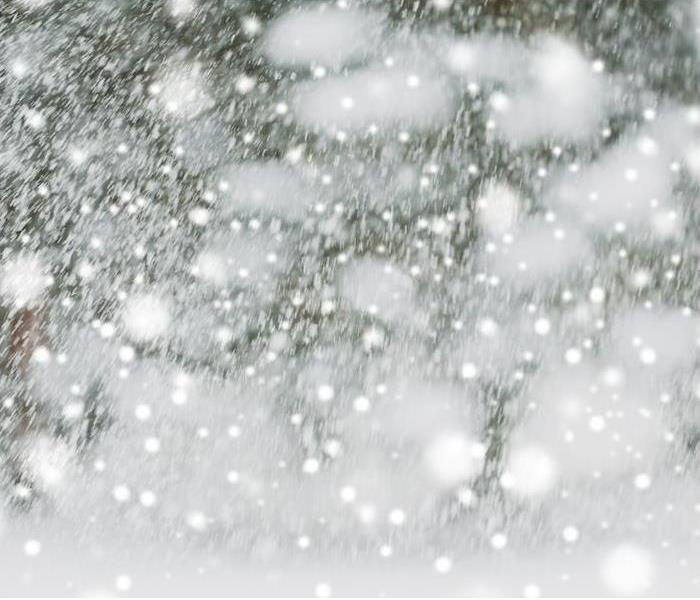That’s Not Hail, It’s…Graupel? | SERVPRO® of East Mecklenburg/Matthews
11/22/2021 (Permalink)
 If storms or precipitation cause damage to your home or business, contact SERVPRO of East Mecklenburg/Matthews.
If storms or precipitation cause damage to your home or business, contact SERVPRO of East Mecklenburg/Matthews.
There are many forms of precipitation, and we’re likely to see them all over the course of a Matthews winter—all but one, that is.
Have you ever noticed that it doesn’t hail in winter, or thought about why it doesn’t hail in winter? Of course you have; you’re very inquisitive, and that’s why we love you.
So we’re going to make your day today, by helping you differentiate the different types of precipitation you’re likely to experience over the next few months in Mecklenburg County, including one that sometimes masquerades as hail.
Rain. If you’re not able to define this one by now, we need to start over. Rain forms when water vapor condenses as part of the global water cycle, which consists of condensation, precipitation and evaporation. The drops get too heavy to be held in the clouds, and they fall to the earth in the form of raindrops.
Freezing rain. Freezing rain appears to us to be rain that freezes once it hits the ground, but it’s actually melted snow that refreezes when it hits the ground. Snow crystals descending from clouds encounter warmer, moist air and melt. When they hit the cold ground, they freeze again and create a thin layer of ice if enough drops fall.
Sleet. Sleet has the same origin story as freezing rain, in that it begins as a snowflake and descends through a moist, warm layer of air. But thinner layers of moist air cause snowflakes to melt incompletely, and they becomes small ice pellets instead of raindrops. These pellets are what we know as sleet, and they, too, form a potentially dangerous layer of ice when they hit the ground.
Graupel. Sometimes called soft hail, corn snow, snow pellets, this frozen precipitation is rarely mentioned, but often mistaken for hail. It forms when very cold water droplets come in contact with falling snowflakes and combine into tiny balls of ice that vary in size up to about 0.2 inches—this process is called riming and it creates a unique precipitation that is hard enough to be ice, but soft enough that it typically disintegrates when touched.
Graupel pellets never reach a size that could classify them as hailstones, and their formation is different. Hail forms because of low pressure rising from the earth’s surface, which doesn’t happen in winter.
So now you know—you may see several kinds of frozen or freezing precipitation this winter, but hail won’t be one of them. Regardless of what type you encounter, be sure to be very cautious if driving or walking during a winter weather event, especially if weather becomes severe.
If storms or precipitation cause damage do your home or business in East Mecklenburg County, you’ve got a team nearby who’s ready to help. Contact SERVPRO today to see how we can assist you.





 24/7 Emergency Service
24/7 Emergency Service